A conversation with Peter Tepe | Section: Interviews
Abstract: malatsion’s science-related works reflect her interest in modern biology and the ethical issues it raises. In the interview, the artist presents the installation Genese/genesen, a work open to interpretation, which particularly appeals to the senses and is therefore also meant to inspire reflection. malatsion combines well-tried visual effects and sensitive creations in a spatial BioArt fiction.
In the w/k article Laboratory Fantasies, you presented the science-related project © semons from 2010. In the interview, we now turn to the work Genese/genesen [Genesis/recover], which you created in 2016–2017. It was featured at the Museu de Arte Contemporânea de Sorocaba (São Paulo, Brazil) in autumn 2016, and in 2017 in the exhibition Naturliebe – erneuerbare Haltungen [Love of Nature – Renewable Attitudes] at the Künstlerverein Walkmühle (Wiesbaden). Could you please describe your work?
As in other works of mine, I stage sculptures, photographs and props in a spatial fiction that mixes realism and fantasy. This installation consists of six aquariums on high tables covered with white sheets. Soft sculptures of 15-40 cm length (made of silicone elastomer, pastel pigments and pebbles) float in water, while aquarium pumps and lamps contribute to a life-like effect of these organic-looking objects. Stacks of white towels are distributed here and there. On one of the tables, there is an open folder with photographs that function as treatment sheets. By treatment I mean a procedure that alters the processed organs/organisms, for example in order to develop them or to improve their condition. In this work, the treatment sheets form the photographic documentation of these processes.
Which artistic concept does this work follow?
Genese/genesen presents aquatic organisms or organs as fragile objects of experimentation, in a setting suggesting a sterile place for scientific research or for therapy. Each organism or organ bears the traces of the treatment undergone, and this is documented by the photographs. Unpleasant details, such as sutures, fresh scars, bruises, contrast with the status of rest and expansion in the water. The “aquarium effect”, that is the relaxing effect of the spectacle of underwater life, is an integral part of the installation, making the link between sensuality, emotions and empathy. This artistic work, on life in its initial phase and/or in a process of regeneration, inquires about the possibility of the close link between empathy and the formulation of ethics regarding our intervention in the living matter and in natural processes.
Do you have an artistic engagement with a critical view of certain forms of biological research, this engagement being motivated by a particular “ethic regarding our intervention in the living matter and in natural processes”?
No. I do not stand for any specific ethic of biological research. I am not interested in a critical view in the sense of a negative estimation or rejection.
If you are not referring to a certain ethic, and so if you are not trying by artistic means to point out for example dangerous tendencies in modern biology – then what is the core of your concept?
The installation fascinates many spectators, which results from the intentional combination of aquarium effect, movement and lighting. This emotional experience is designed to invite people to ethical thoughts in relation to the latest technological developments in biology. Whatever reflections the installation inspires, is however up to the viewer. As I already described in Laboratory Fantasies, I am not looking for an intellectual discourse in my artistic practice. I prefer to use the sensuality of forms and soft material in motion because it allows a direct approach to the issue via an empathetic feeling in our own body. The common view is that scientific processes should exclude any interference with the subjective – although in fact, as Birgitta Weimer points out, it is unavoidable. On the other hand, the subjectivity involved in science-related art enables to take a step back, which encourages knowledge. This is what I consider an enriching interaction between art and science, as Sabine Roeser, Professor of Ethics at the TU Delft, clearly explains:
“Emotions like sense of responsibility, outrage or disgust uncover several moral insights that are hard to detect when we look at [bio]technologies in a purely scientific way. […] Many artists are fascinated by new technologies and play with their ambiguities. This can be helpful to think explicitly and critically about the moral pros and cons.”[1]
If I understand you correctly, you are striving to bring about an “enriching interaction between art and science” through your work. In concrete terms, you invite the viewers to reflect on the moral issues posed by modern biology, but you do not want to provide them with a guideline. Is that correct?
Yes, but in the end it is about much more than moral problems. The installation also evokes several positive attitudes, such as care, suggested by the gentle hands in action in the treatment sheets. I am also interested in the actual complexity of the theme itself, in the many connections (in this work especially with the environment), and thus in the fundamental difficulty of such reflection.
What interests me now is your personal opinion about these things, because I believe there is a close link between someone’s artistic production and their way of thinking. So my question is: what are the results of your own reflection in the context of the latest technological developments in biology?
Well, as an artist my results are not worded thoughts but artworks – mine are primarily based on images, impressions and feelings. That is, in my work I do not elaborate a real reflection leading to results. It is more like thoughts accompanying the creative process in the background: I question our power to modify the living around and within us and to use it as a technological resource. But it is also a matter of our responsibility for the consequences of our intervention at the core of life. In other words, as exciting as the way life sciences are developing today, I think we are still a long way from having grasped the complexity of life, or at least from an adequate understanding of it, and so we barely have an accurate estimation of its intrinsic fragility. What is more, and here again I agree with Birgitta Weimer: the linear mode of thinking, which is still dominant, is actually hardly capable of explaining the complex network-like and the permanently changing. In this sense, the rhizome-like thinking processes in art could contribute to a further enriching interaction between art and science.
Let me return to the openness of your work. It seems that you want to foster very different interpretations. Why, and by what means?
The processes and objects represented, as well as the suggested place, have all been left indeterminate because this for me is a way to stimulate a sensual and emotional approach, by appealing to free associations. The theme of the work does indeed refer to the life sciences, however the poetic bizarreness of the sculptures and the symbolism of the selected props (white colour, sheets, towels) are my essential resources in this work. Since the floating objects and the photographs are not clearly definable, they have a destabilizing and disturbing potential, and so raise questions. For the visual references, I find inspiration mainly in the natural sciences, but also in popular culture, especially in science fiction films and comics. I am interested in their representational mechanisms and how their favoured visual elements work to create tension and fascination.
Let me now come to the classification of your work in a broader context. Is it correct to assign you to BioArt? By this I mean a diverse art movement that refers primarily to (modern) biology and is inspired by its theories/methods/results.
Labelling my entire artistic position as a BioArt would go too far, because only a few of my works deal with this field. But the installation Genese/genesen can be regarded as BioArt in a broad sense. The two works © semons and du n° 026B77 au n° 033L89 also refer to modern biology, even though the stylization of their staged objects has nothing to do with the realistic organic effect you often see in BioArt.
Do these works have any further references?
The relation to modern biology falls within the wider context of my interest in the interactions between human societies and nature. Working on Genese/genesen led me to deal with a further issue, the destruction of the aquatic world. This work should therefore not be perceived exclusively in relation to modern biology. As for du n° 026B77 au n° 033L89, there is another specific background, which is the question of the protection of species within their own ecosystem, in comparison with the preservation of the genetic material of certain species in seed or gene banks.
BioArt is a manifold art movement. Which practices do you feel close to?
My installation is a speculative artwork, that is, it uses the classical representing media of art. This is why I feel close to Pinar Yoldas’ practice; however, I only got to know her work Ecosystem of Excess (2014) after the realization of Genese/genesen. Currently a dominant medium of BioArt is actually living matter, and many BioArtists have appropriate training in the life sciences. In this field of practice, I find the Australian artist Svenja Kratz particularly interesting, because she evaluates failed experiments positively: they inspire her, for example for her series The Contamination of Alice (2009–2014). I do not rule out using living matter in the future, although my favourite media will still be sculpture, drawing and photography. My work colméias[beehives] (2016) with Brazilian wild bee swarms was a first step in this direction. I realized this work in collaboration with the environmental protection association SOS abelhas sem ferrão [SOS stingless bees]. This work was less about human intervention in the biology of an animal than about the adaptability of wild bees in urban space – an area hostile to life and yet forming an ecosystem.
Are there any trends in BioArt from which you distance yourself, because their approach is the opposite of what you think is right?
I cannot really answer that question, because I am acquainted with only a few BioArt positions and have no overview. I do not have a moral point of view on the work of colleagues, as my opinion on the matter is primarily to refer to the freedom of art. Provocations and transgressions in art can become catalysts for social moral debates. Should BioArtists therefore be entitled to more liberties than allowed by the ethical framework of biological research? Even the research project Trust Me, I’m an Artist gives no clear answer. What worries me is not BioArt itself, but rather its instrumentalization, which is also addressed in Trust Me, I’m an Artist:
“Roeser, educated as an artist herself, says smilingly that some scientists have the idea that artists could be helpful explaining controversial researches to society. […] She too gets asked now and then how researchers and industry can make sure the public accepts new technologies.”[2]
“Artwashing” is an example of strategy the industry developed to improve its reputation by its commitment to art and promotion of its fields of interest, such as arts that use new technologies. The discreet omnipresence of this funding, through foundations and partnerships (awards, grants, exhibitions, etc.), inevitably creates a climate of acceptance.
Thank you, malatsion, for the interesting conversation.
Picture above article: malatsion: Genese/genesen (2016–2017). Photo: malatsion.
[1] W. Koops: Ethical Trilemmas. In: Trust Me, I’m an Artist. Developing Ethical Frameworks for Artists, Cultural Institutions and Audiences Engaged in the Challenges of Creating and Experiencing New Art Forms in Biotechnology and Biomedicine in Europe. http://trustmeimanartist.eu/ethical-trilemmas/, Posted on 22.06.2017
[2] ibid.
How to cite this article
Peter Tepe (2019): malatsion: Genese/genesen. w/k–Between Science & Art Journal. https://doi.org/10.55597/e4521
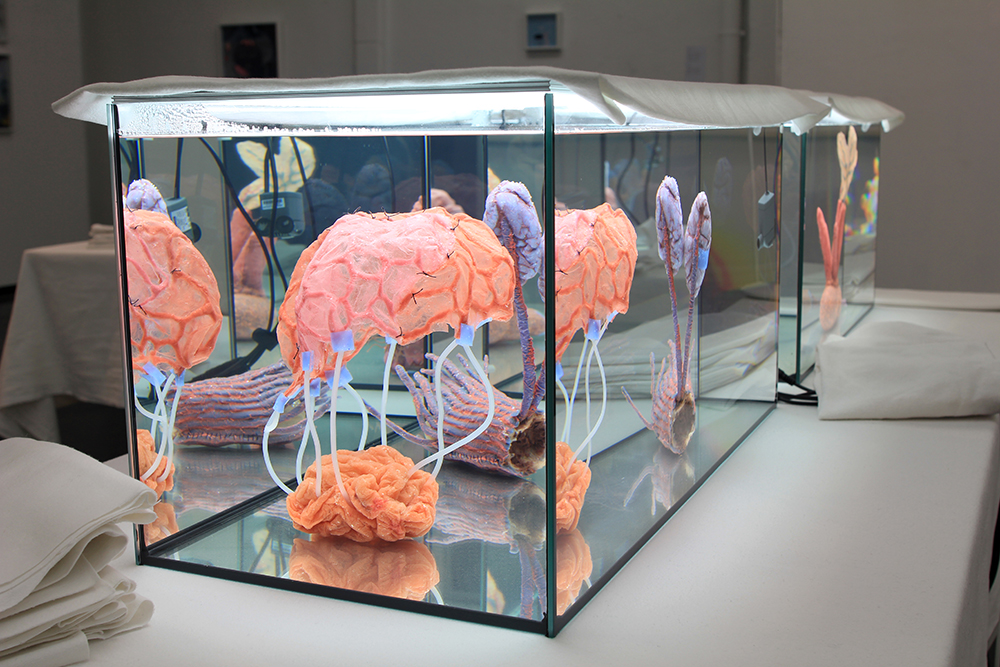
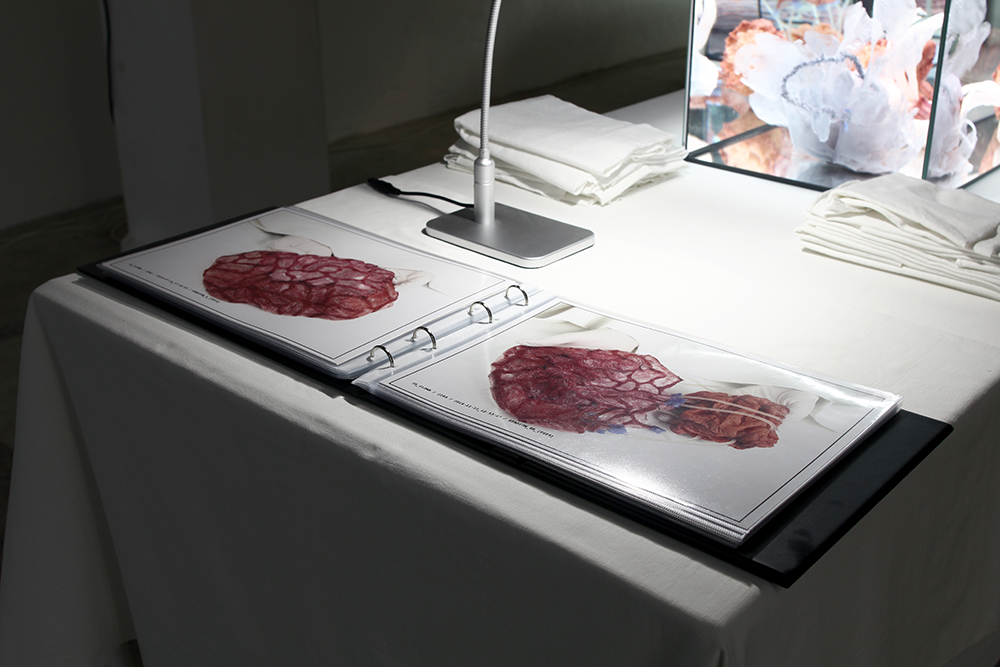
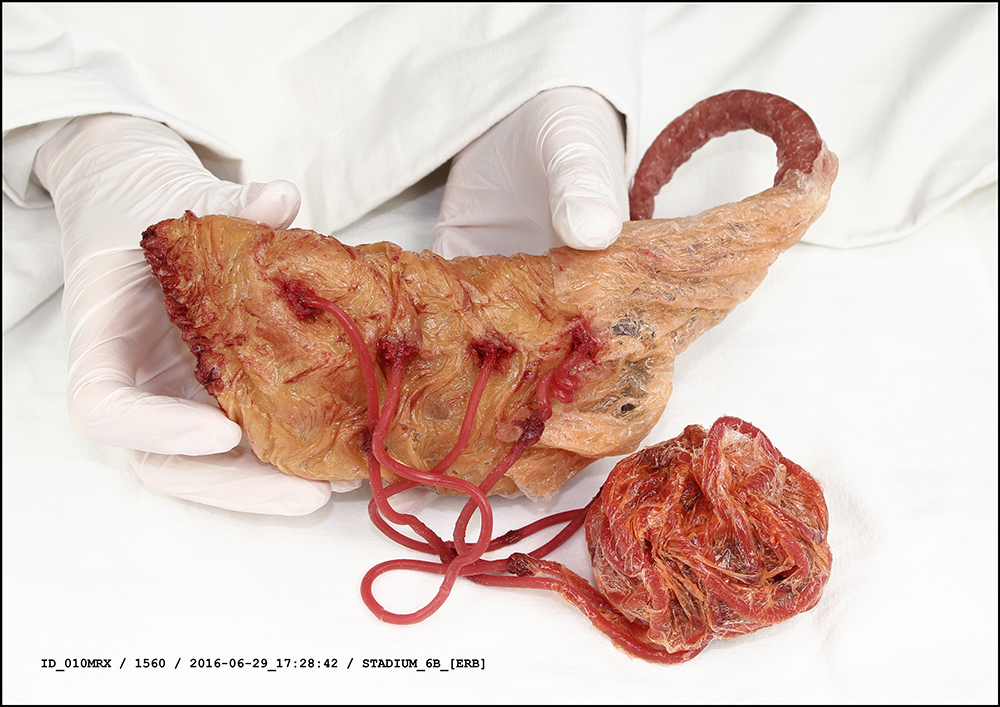


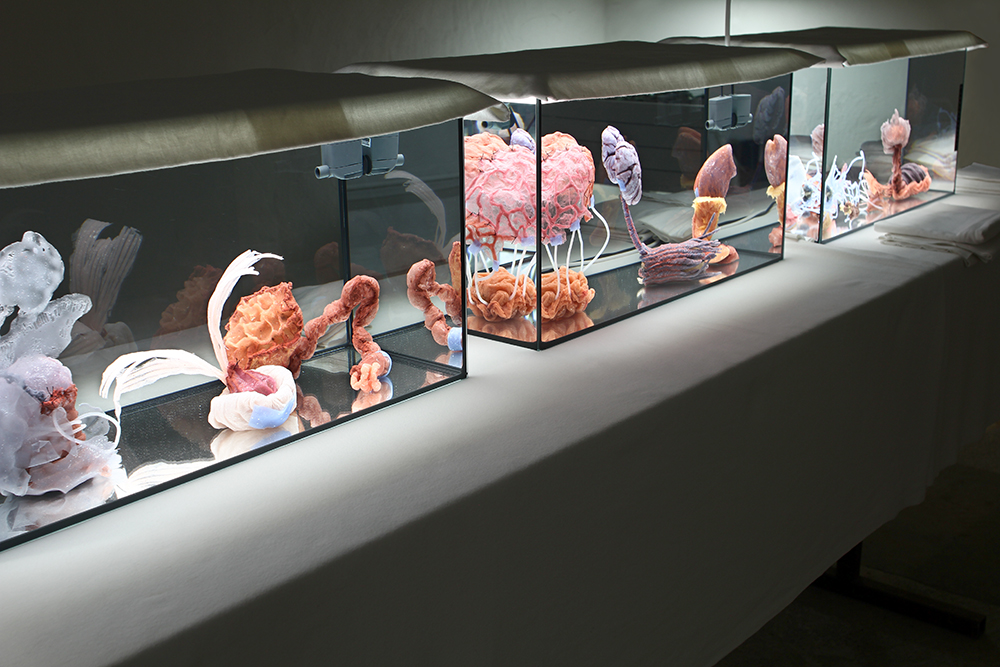
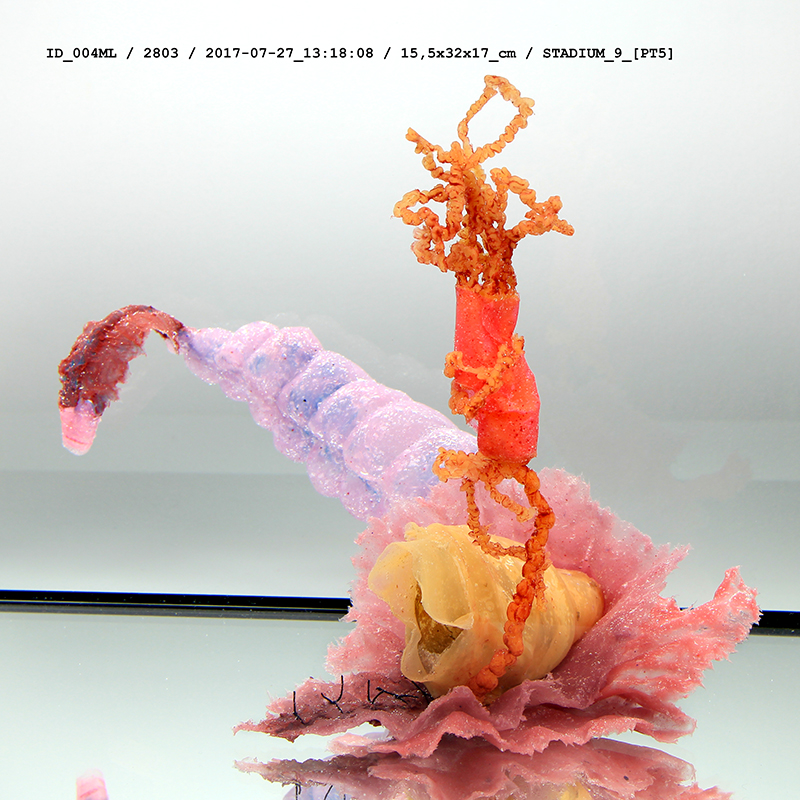

… [Trackback]
[…] Info to that Topic: between-science-and-art.com/malatsion-genese-genesen/ […]